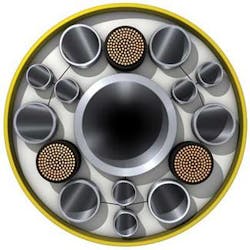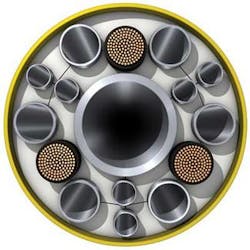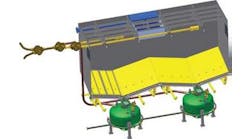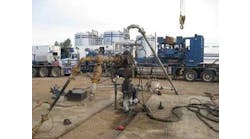Sandvik Materials Technology has launched a hyper-duplex stainless steel tube material which is designed to improve umbilical performance in increasingly demanding subsea environments.
Sandvik SAF 3207 HD is designed specifically for deepwater, high temperature, and extreme pressure applications. It provides a tensile strength of 980-1,180 MPa and a maximum operating temperature of up to 90º C (194º F). This compares with a tensile strength of 800-1,100 MPa and maximum water temperature rating of 65º C (150º F) for the company’s standard super-duplex grade SAF 2507.
The company, which claims to have around 70% of the market for all steel tube umbilicals and 90% of deep and ultra deepwater umbilicals, embarked on the HD development several years ago. “We did some customer surveys asking what the future requirements would be to develop the deeper, tougher fields,” says John Tokaruk, sales and marketing manager for subsea products. “We then looked at our alloy program and SAF 3207 HD is the alloy that was developed.”
SAF 2507, what Sandvik calls its “workhorse” tubing steel, can be deployed in water depths greater than 2,000 m (6,562 ft), he claims. However, as the pressure at the seabed increases with depth, the wall thickness of the tube eventually becomes so great that it can become uneconomic to purchase all the material required. And at water depths greater than 2,500 m (8,202 ft), the life of current steels is limited as they tend to yield under their own weight.
With its higher tensile strength, SAF 3207 HD can meet the same pressure requirements with a thinner wall thickness, providing a significant weight saving. This varies depending on pressure, tube size, and temperature, but on average the saving will be around 20%, says Tokaruk. A lighter umbilical also means savings in installation costs.
The new steel’s ability to withstand crevice corrosion caused by exposure to water and very high temperature also gives the operator greater freedom to pump hot fluids down the tube or to electrically heat the umbilical when faced with wax formation or a blockage in the pipeline.
Studies are already under way with certain end-users to consider the application of the new steel in upcoming projects, Tokaruk adds.
For more information contact John Tokaruk, Sandvik Materials Technology. Tel +47 5169 4065, fax +47 5169 4099,[email protected], www.smt.sandvik.com




